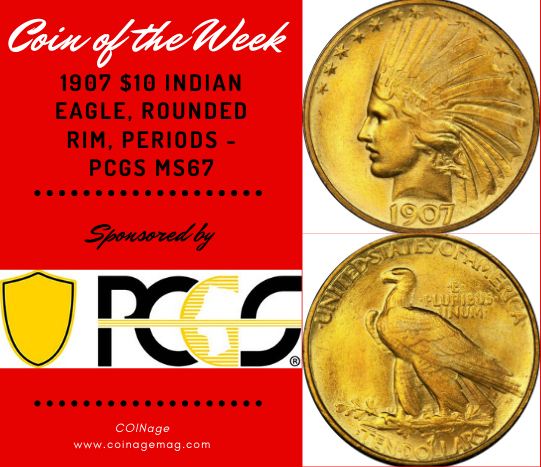
The $10 Indian Eagle gold coins are highly popular with collectors of vintage coinage. While this series is not categorically scarce in the relative sense, there are a few pieces that rank as quite rare. To be sure, there are series key and semi-key dates, including the regular-issue toughies such as the 1911-D, 1913-S, 1920-S, and 1930.
Then there are the patterns and other prototype pieces, struck to exhibit what finished versions of the new coin would look like. One of these rare gold eagles is the 1907 Rounded Rim, Periods variety. Catalogued as the Judd-1903, Pollock-1997, the 1907 Rounded Rim, Periods $10 eagle is an exceedingly rare and sought-after issue. When one of the finest examples, graded MS67 by Professional Coin Grading Service, crossed the Stack’s Bowers Galleries auction block in 2020, it fetched far more than its presale estimate of $400,000 to $500,000, taking home an outstanding $576,000.
The sharply struck example that took more than a half-million dollars exhibits gorgeous rose-colored highlights over warm golden-yellow surfaces. It’s a prime example of this coin designed by celebrated sculptor Augustus Saint-Gaudens, who died the same year this pattern was struck. The patterns were created in the process of refining Saint-Gaudens’ design, featuring high-relief details and other lush elements that proved challenging for mass production.
While it’s believed that more than 30,000 were struck, all but 50 were melted. The survivors were largely distributed to museums and individuals connected with the creation of the coin. According to PCGS CoinFacts, 41 specimens are estimated to survive. Today, the 1907 Rounded Rim, Periods $10 is the rarest of the 1907 eagles, though most of the survivors are in Mint State grades, generally clustered in the MS65 to MS66 range.













